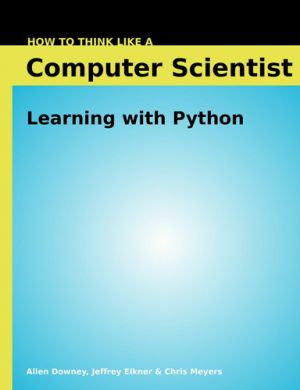How to Think Like a Computer Scientist
Learning with Python
by Allen Downey, Jeffrey Elkner, Chris Meyers
DescriptionTable of ContentsDetailsHashtagsReport an issue 





Book Description
How to Think Like a Computer Scientist: Learning with Python - is an introduction to computer science using the Python programming language. It covers the basics of computer programming, including variables and values, functions, conditionals and control flow, program development and debugging. Later chapters cover basic algorithms and data structures.This open book is licensed under a GNU Free Documentation License (GNU FDL). You can download How to Think Like a Computer Scientist ebook for free in PDF format (1.1 MB).
Table of Contents
Chapter 1
The way of the program
Chapter 2
Variables, expressions and statements
Chapter 3
Functions
Chapter 4
Conditionals and recursion
Chapter 5
Fruitful functions
Chapter 6
Iteration
Chapter 7
Strings
Chapter 8
Lists
Chapter 9
Tuples
Chapter 10
Dictionaries
Chapter 11
Files and exceptions
Chapter 12
Classes and objects
Chapter 13
Classes and functions
Chapter 14
Classes and methods
Chapter 15
Sets of objects
Chapter 16
Inheritance
Chapter 17
Linked lists
Chapter 18
Stacks
Chapter 19
Queues
Chapter 20
Trees
Appendix A
Debugging
Appendix B
Creating a new data type
Appendix C
Recommendations for further reading
Book Details
Title
How to Think Like a Computer Scientist
Subject
Computer Science
Publisher
Green Tea Press
Published
2008
Pages
280
Edition
1
Language
English
ISBN13 Digital
9780971677500
ISBN10 Digital
0971677506
PDF Size
1.1 MB
License
GNU FDL
Related Books
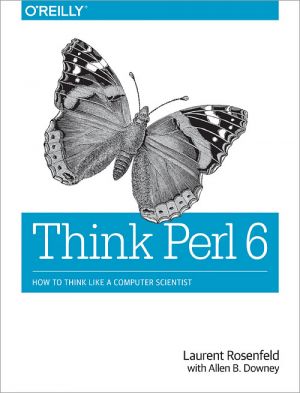
The title of this book was originally Think Perl 6, but since Perl 6 has been renamed Raku, we have also changed the title of the book.
Want to learn how to program and think like a computer scientist? This practical guide gets you started on your programming journey with the help of Raku (Perl 6), the younger sister of the popular Perl programm...

How to Think Like a Computer Scientist is an introductory programming book based on the OCaml language. It is a modified version of Think Python by Allen Downey. It is intended for newcomers to programming and also those who know some programming but want to learn programming in the function-oriented paradigm, or those who simply want to learn OCam...
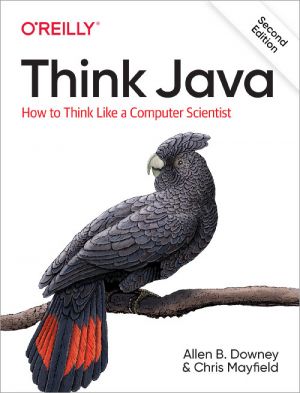
Think Java is a hands-on introduction to computer science and programming used by many universities and high schools around the world. Its conciseness, emphasis on vocabulary, and informal tone make it particularly appealing for readers with little or no experience. The book starts with the most basic programming concepts and gradually works its wa...
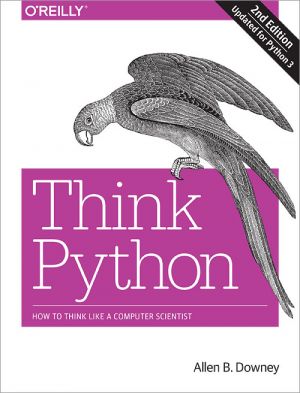
If you want to learn how to program, working with Python is an excellent way to start. This hands-on guide takes you through the language a step at a time, beginning with basic programming concepts before moving on to functions, recursion, data structures, and object-oriented design. This second edition and its supporting code have been updated for...
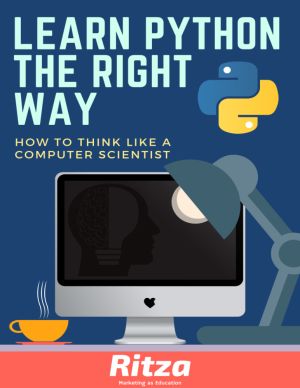
Python is a fun and extremely easy-to-use programming language that has steadily gained in popularity over the last few years. Developed over ten years ago by Guido van Rossum, Python's simple syntax and overall feel is largely derived from ABC, a teaching language that was developed in the 1980's.
However, Python was also created to s...

Fully updated for Raspberry Pi 400, Raspberry Pi 4, and the latest software, this 252-page official Raspberry Pi book is crammed with projects and beginner's guides containing all the information you need to get started using your new computer!
Learn how to set up your Raspberry Pi, install an operating system, and start using it. Follow st...

